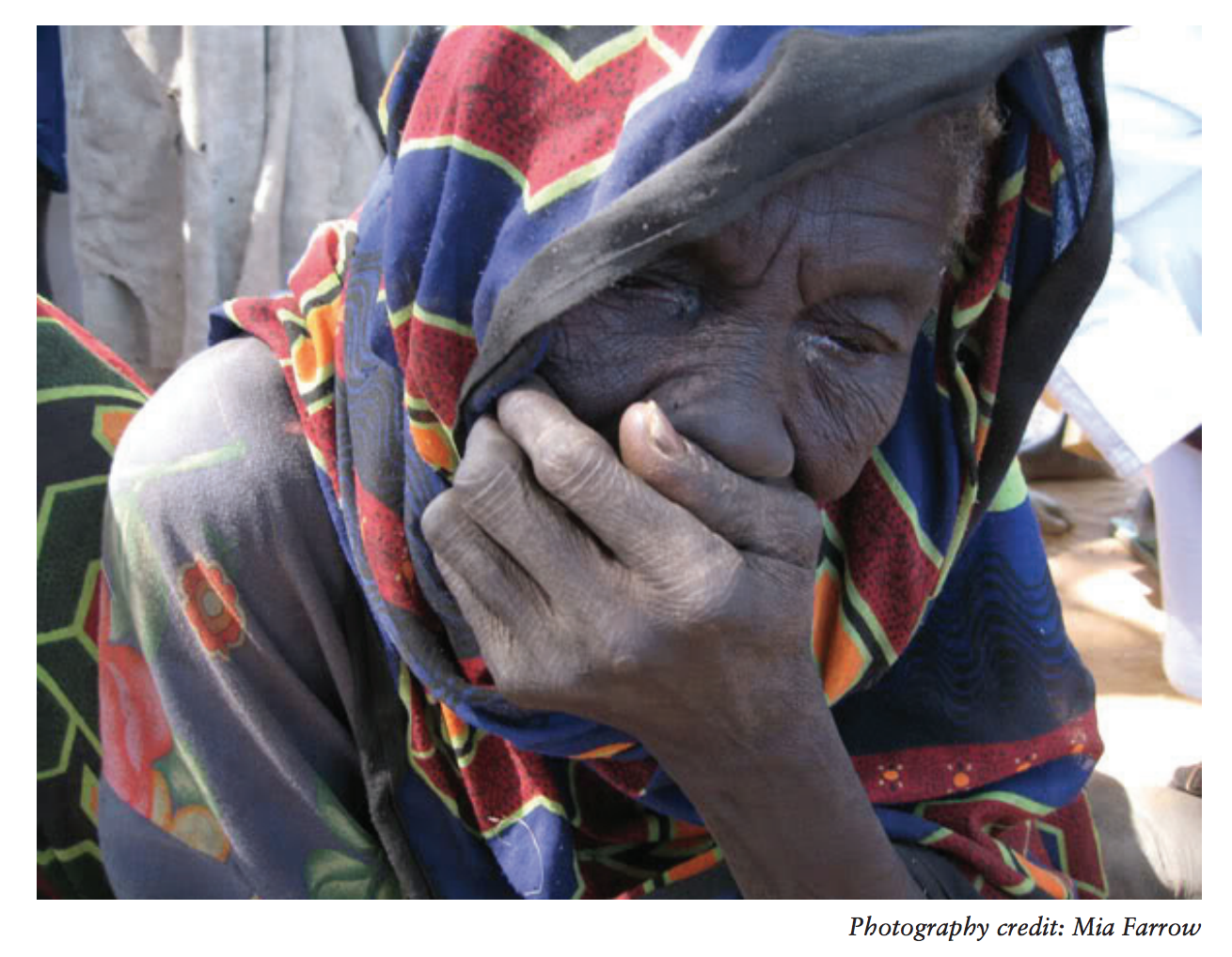Now Ten Years Since the UN Offered a Mortality Estimate for the Darfur Genocide
Eric Reeves | April 22, 2018 | https://wp.me/p45rOG-2eL
It has been exactly ten years since then-UN Under-Secretary for Humanitarian Affairs John Holmes offered the last UN estimate of total morality in the Darfur genocide—the total number of those killed, directly and indirectly, as a result of the ethnically-targeted violence orchestrated by the National Islamic Front/National Congress Party regime in Khartoum (see a representative news dispatch from the time, below). Holmes’ figure was 300,000 and ten years later, a full decade, this is still the figure cited by the overwhelming majority of international news organizations when, on rare occasions, they make reference to Darfur.
My own analysis of mortality in August 2010 argued that the data and reports extant at the time indicated mortality had grown to 500,000 (it should be said that there were significant lacunae in the data on which Holmes bases his April 2008 extrapolation from a previous UN figure of 200,000). An update to my analysis in November 2016 argued that additional data and new reports argued for a total mortality figure of 600,000 dead from the direct and indirect effects of Khartoum-orchestrated, ethnically-targeted violence.
The combined analyses may be found at | https://wp.me/p45rOG-AB
To date I have received from no quarter substantive criticism of my analysis.
The only other significant mortality study conducted subsequent to Holmes’ April 2008 estimate was that authored by Olivier Degomme and Debarati Guha-Sapir of the Center for the Epidemiology of Disasters (CRED), based in Belgium. While comprehensive and persuasive in its account of the mortality resulting from the effects of violent displacement (disease, malnutrition, and other forms of trauma), the study is grossly flawed in its estimate of the direct effects of violence in the period covered by their analysis (“early 2004 to the end of 2008.” Most conspicuously and irresponsibly, the report excludes the period from February 2003 (commonly the terminus a quo in dating of the Darfur genocide) to “early 2004” (a date never specified with precision)—a shocking and incomprehensible omission. This was of course one the very most violently destructive years in the Darfur genocide, during which the death toll from violent assaults on non-Arab/African villages was exceedingly large. To have excluded meaningful consideration of this period fatally compromises the mortality total they arrive at: approximately 300,000 as of December 2008.
I have directly confronted one of the authors of the report at a conference focused on Darfur, inquiring about the justification for omitting critical period, and received no answer.*
Even accepting the figures of Holmes, or even the CRED study (with its terminus ad quem of December 2008), we must wonder why no efforts have been made to quantify the genocidal destruction in Darfur for which the Khartoum regime bears responsibility—a responsibility reflected in an arrest warrant issued by the International Criminal Court (2009, 2010), charging regime President Omar al-Bashir with genocide and crimes against humanity,
If my analysis of all data and reports currently extant is even approximately correct, then well over half a million people have died from violence, directly and indirectly, over the past fifteen years. That there is no alternative mortality figure that includes data and reports subsequent to 2008 suggests a moral erasure of those lives that have been lost to state-sponsored, ethnically-targeted violence—to genocide.
********************************
* One clear reason for the limitations of the CRED report is its its complete dependence on the massive CRED data bases, which contain enormous amounts of useful information, including data bearing on mortality in Darfur. And yet, there are no mortality studies at all for Darfur for the year 2003 in CRED’s “Complex Emergency Database”: entering this year and the name of any of the Darfur states into the site’s search engine yields only the message, “No entries found, please try broaden your search parameters.” This is undoubtedly, in my mind, why the authors begin in “early 2004,” again a date that is not specified with precision—and omits the year from February 2003 to “early 2004.”
U.N. says Darfur dead may be 300,000 as Sudan denies
UNITED NATIONS (Reuters), April 22, 2008 | https://www.reuters.com/article/us-sudan-darfur-un/u-n-says-darfur-dead-may-be-300000-as-sudan-denies-idUSN2230854320080422
As many as 300,000 people may have died in the five-year conflict in Darfur, a dramatic increase over earlier estimates of 200,000, a top U.N. official said on Tuesday.
Sudan’s U.N. Ambassador Abdalmahmoud Abdalhaleem said the figure was grossly exaggerated and the United Nations cautioned reporters that the number was not a scientific estimate but a “reasonable extrapolation.”
John Holmes, U.N. under-secretary-general for humanitarian affairs, mentioned the new estimate in a speech at a U.N. Security Council meeting on the conflict in the western Sudanese region. “A study in 2006 suggested that 200,000 had lost their lives from the combined effects of the conflict. That figure must be much higher now, perhaps half as much again,” Holmes said, according to a written text of his remarks.
Abdalhaleem said Khartoum put the death toll at 10,000, slightly above the government’s previous estimate of 9,000. This figure only includes combat deaths because there is no famine and no epidemic in Darfur, he said. “These remarks by Holmes are not helpful, are not correct, are not credible,” Abdalhaleem told Reuters. “He should tell us who made that study, who commissioned it and how was it done.”
Holmes was later asked by reporters to clarify his estimate. He said he was “not trying to give an exact figure” and described 300,000 as a “reasonable extrapolation” from the 2006 estimate for the current total number of people who have died in Darfur of disease, hunger or in combat. Holmes said the original 200,000 figure was based on a 2-year-old study by the World Health Organization. He said there were no plans now for a new scientific study to determine the precise number of deaths in Darfur caused by the conflict.
Asked if the figure could be even higher than 300,000, Holmes said: “I’m trying to be reasonable, conservative.”
